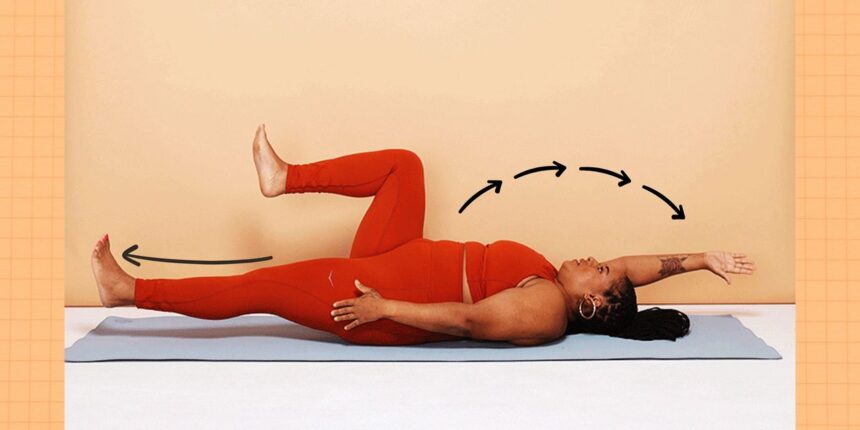Don’t let its name deceive you: The dead bug exercise is actually a really stellar strength move—and one, we’re happy to inform you, that has nothing to do with, um, expired cockroaches or beetles.
In fact, consider it a “low-risk, high reward” movement for your entire core, Evan Williams, CSCS, founder of E2G Performance in Chicago, tells SELF. That’s because this beginner-friendly exercise brings a lower risk of injury than other abs staples (like sit-ups or crunches) and a host of bodywide benefits, including better posture, coordination, and, of course, core strength.
For everything to know about the dead bug exercise—including which muscles it works and why it’s so damn effective—keep on reading. Want to give it a try yourself? We’ve got you covered there too, with a step-by-step guide on how to do it the right way (plus a more challenging dead bug variation you may want to keep in your back pocket).
What muscles does the dead bug exercise work?
Your core muscles are the main players here, including your transverse abdominis (deepest core muscles that wrap around your spine and sides), rectus abdominis (muscles that run vertically along the front of your abdomen), obliques (muscles on the sides of your stomach), and pelvic floor (the muscles at the base of the pelvis that support the organs in this area), Williams says. It also works your erector spinae and your hip flexors.
As for your upper body, the OG dead bug doesn’t work much there. But there is a variation that can bring some of those muscles into the action: You’d simply perform the move holding light weights in your hands, which would light up your shoulders—and increase the difficulty of the exercise overall.
What are the benefits of adding the dead bug to your routine?
The dead bug challenges your core strength and stability as well as your coordination. It can also help improve your posture and may reduce your risk of lower back pain.
Here’s how: Executing this exercise involves lying on your back in tabletop position and extending one arm and the opposite leg out straight. When you do this, your lower back naturally wants to go into extension—to arch and come off the floor. But the main goal of the dead bug is to engage your core to prevent that from happening, which makes it an “anti-extension” movement, Williams says. In this position, you’re training core strength and stability and also practicing good posture, since your spine is in a neutral position while your limbs are in motion.
Then there’s the coordination aspect. Because the dead bug involves simultaneously moving your arm and opposite leg and then switching, your brain has to be locked in. Many people struggle with this coordination challenge—which is akin to rubbing your stomach and patting your head—when they first try the dead bug, Williams says. But with practice, their coordination abilities improve, he explains.
Lastly, weakness in your back and core have been linked to the development of back pain. Since the dead bug exercise helps strengthen the erector spinae in your lower back, it may also help reduce your risk of pain in that area.
Are dead bugs good for beginners?
You bet. Like we mentioned, there’s a lower risk of injury with the dead bug compared to other core moves, which makes it great for beginners. Unlike a crunch or sit-up, your back remains fully supported on the ground, Williams says—you’re not taking your spine into flexion, which can stress your lower back.
Read the full article here



